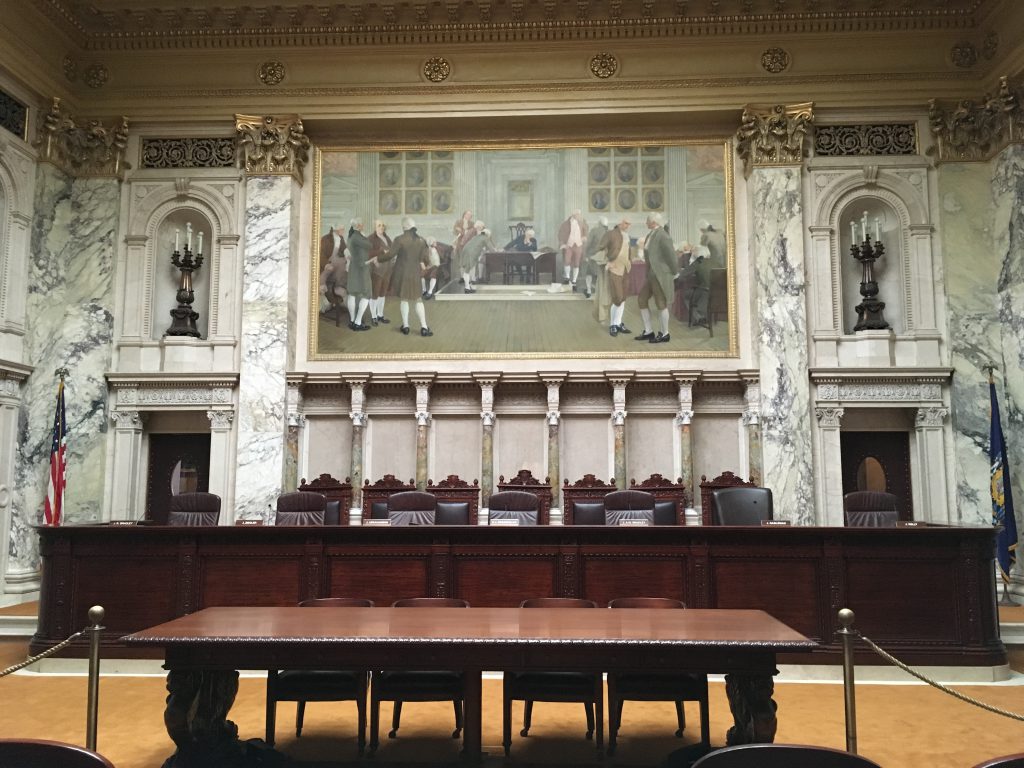State Supreme Court Picks Evers’ Legislative Maps
New legislative maps meet court's "least change" criteria more than GOP-backed maps.
The Wisconsin Supreme Court ruled Thursday it would use the “least changes” redistricting plans submitted by Democratic Gov. Tony Evers as Wisconsin’s political maps for the next decade.
In the 4-3 decision, conservative swing Justice Brian Hagedorn wrote that of all the plans submitted, Evers’ plan best complied with criteria laid out by the court and met all the requirements of the Wisconsin and United States constitutions.
But choosing Evers’ maps over competing plans submitted by Republican members of Congress and the Legislature was, under the circumstances, a win for Democrats. In the Legislature, it could mean the difference between simple Republican majorities and super majorities that could override any governor’s vetoes.
Evers celebrated the ruling in a statement.
“The maps I submitted to the Court that were selected today are a vast improvement from the gerrymandered maps Wisconsin has had for the last decade and the even more gerrymandered Republicans maps that I vetoed last year,” he said.
Hagedorn, who ruled with conservative justices in November, was joined by the court’s three liberal justices in his decision siding with Evers. He said the best way to measure “least change” is to choose the map that moves the fewest number of people into new districts.
“In this regard, the Governor’s proposed map is superior to every other proposal. It is the map with the least change,” Hagedorn wrote.
Among the proposed state legislative maps, Hagedorn said Evers’ map had “vastly superior core retention” for state Assembly districts.
Republicans had urged the court to look at other metrics when deciding on new maps, stressing their proposals contained districts that were more equal in population. Hagedorn dismissed those arguments.
“Proposed maps are either lawful or they are not; no constitutional map is more constitutional than another,” Hagedorn wrote. “For our purposes, so long as a map complies with constitutional requirements, better performance on these metrics becomes commendable, but not constitutionally required.”
Writing for the dissent, conservative Chief Justice Annette Ziegler said Hagedorn’s ruling was “imbued with personal preference” and lacking in legal analysis.
“The majority’s decision to select Governor Tony Evers’ maps is an exercise of judicial activism, untethered to evidence, precedent, the Wisconsin Constitution, and basic principles of equal protection,” Ziegler wrote.
While the Wisconsin Supreme Court’s say is final in the state court system, a federal court could still consider a limited challenge to the maps based on federal law and the U.S. Constitution.
Editor’s note: This story will be updated.
More about the Gerrymandering of Legislative Districts
- Without Gerrymander, Democrats Flip 14 Legislative Seats - Jack Kelly, Hallie Claflin and Matthew DeFour - Nov 8th, 2024
- Op Ed: Democrats Optimistic About New Voting Maps - Ruth Conniff - Feb 27th, 2024
- The State of Politics: Parties Seek New Candidates in New Districts - Steven Walters - Feb 26th, 2024
- Rep. Myers Issues Statement Regarding Fair Legislative Maps - State Rep. LaKeshia Myers - Feb 19th, 2024
- Statement on Legislative Maps Being Signed into Law - Wisconsin Assembly Speaker Robin Vos - Feb 19th, 2024
- Pocan Reacts to Newly Signed Wisconsin Legislative Maps - U.S. Rep. Mark Pocan - Feb 19th, 2024
- Evers Signs Legislative Maps Into Law, Ending Court Fight - Rich Kremer - Feb 19th, 2024
- Senator Hesselbein Statement: After More than a Decade of Political Gerrymanders, Fair Maps are Signed into Law in Wisconsin - State Senate Democratic Leader Dianne Hesselbein - Feb 19th, 2024
- Wisconsin Democrats on Enactment of New Legislative Maps - Democratic Party of Wisconsin - Feb 19th, 2024
- Governor Evers Signs New Legislative Maps to Replace Unconstitutional GOP Maps - A Better Wisconsin Together - Feb 19th, 2024
Read more about Gerrymandering of Legislative Districts here




















I find it rather incongruous to hear Judge Ziegler accuse the other Supreme Court Justices of political activism. The conservative activities are frequently going to court to advance their causes and quite often their cases are heard by judges who ignore the law presidents to make purely political decisions. The rise of Wisconsin Institute for Law and Liberty is an good example of conservatives using the judicial system to achieve political outcomes.
Kudos to Brian Hagedorn. He seems to be wearing his robe as a centrist on the court rather well. After giving the conservatives a win earlier this year by siding with the conservative majority arguing for a “least change” approach, he then throws it in their face when they try to grab even more with their revised submission.
Hagedorn, to his credit, was the adult in the room and he skillfully sided with the left in letting the right know that grabbing even more is NOT least change.